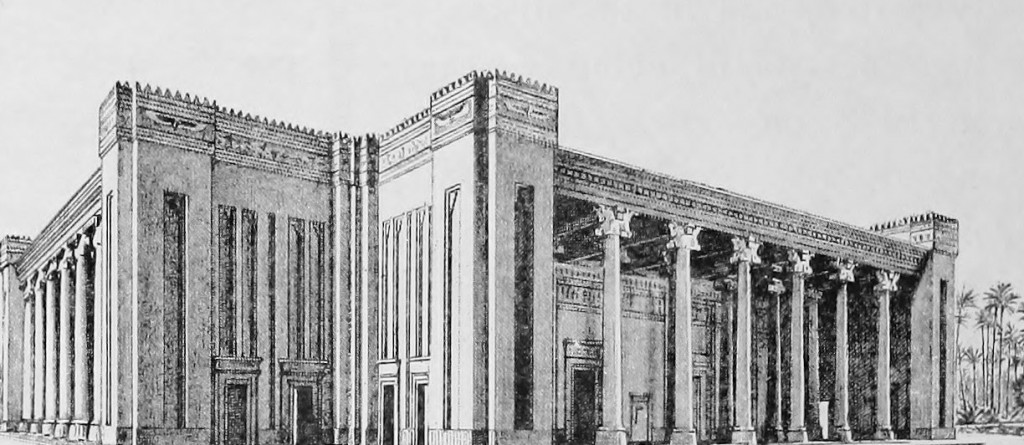The Achaemenid palace in Susa was built during the reign of Darius I the Great. It is built on an impressive terrace (cf. the terrace at Persepolis) and the design is closer to the palaces of Babylonia and Syria, with their numerous rooms, than to the Iranian residences (e.g., Pasargadae and the Taçara in Persepolis). In a famous inscription (known as DSf), discovered in the room that is known as the King’s Hall, he describes how all nations of his empire contributed to the building.
The palace and its apadana were destroyed by fire during the reign of Artaxerxes I Makrocheir (465-424/423). Inscription D2Sb proves that he almost finished restoring the palace; the apadana took longer and was, according to A2Sa, not finished until the reign of his grandson Artaxerxes II Mnemon (404-358).
The palace was usually entered from the east, where the visitors were welcomed at the Great Gate. Moving to the west, guests would pass along three or four courts. The Third Court was the largest: was larger than two first courts. It may have been used for military exercises. The Second Court is now easy to recognize because it looks much deeper than the other cours: here, the archaeologists have tried to reach lower, pre-Achaemenid stratums. They confirmed the words from the inscription of Darius the Great, DSf:
The First Court is probably identical to the Inner Court mentioned in the Biblical book of Esther. It gives access to King’s Hall, where the king received his guests; this is also the room where the inscription already quoted was discovered.
Adjacent to the King’s Hall were two smaller rooms without entrance. The only access must have been from above, which suggests that these rooms were treasuries. When Alexander the Great captured Susa in December 330 BCE, he found some 40,000 talents of precious metal.
The most famous part of the palace was the Apadana, directly north of the Second and Third Courts.
Palace of Darius in Susa
December 18, 2021
0 comment

Comment (0)